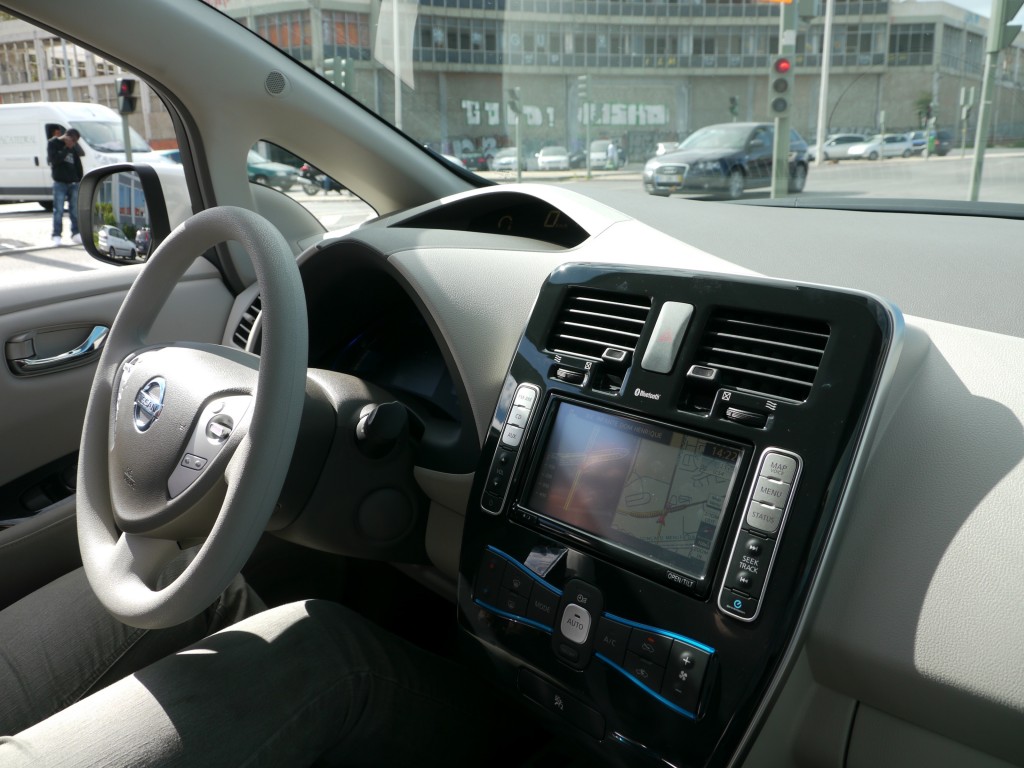Every time a new car launches, someone somewhere will try and improve on whatever its maker produced.
Traditionally, this has meant improvements on things like seating, engine power and entertainment systems -- but in the world of eco-driving, devices which help improve the driver's awareness of fuel economy are popular aftermarket additions to any car.
First charge cable, now battery gauge
You’ve already heard about the fan-inspired modification to Nissan’s included charge cable to turn it into a fully-fledged, level 2 portable charge station -- and now there’s a better battery gauge you can build yourself.
Designed and coded by a team of fans at the popular MyNissanLeaf owners’ forum, the device plugs into the on-board-diagnostics port found on every Nissan Leaf and displays the exact state of charge of the battery as a percentage.
What about the stock battery gauge?
When it designed the Leaf, Nissan decided to represent the state-of-charge of the Leaf’s battery by using a twelve-segment display on the car’s dash. Similar to the fuel gauge on a gasoline car, it drops down gradually as the battery pack is depleted.
But because the Nissan Leaf has a smaller range per charge than a gasoline car, the resolution of the display often induces range anxiety -- with each segment representing as many as 10 miles or as few as 3 miles depending on how the Leaf is driven.
And what about the Leaf’s range estimation?
As any seasoned Leaf owner will tell you, the range estimate produced by its on-board computer varies so widely during a trip that it can only be used to produce a rough-estimate of how many miles you can travel before you need to recharge.
Drive along a flat freeway at 60 miles per-hour, and your Leaf could tell you that it has enough power to drive another 40 miles. Climb a steep hill, and that range estimate could drop by up to half, inducing range anxiety in the driver.
This is because the Leaf can only make range predictions based on the instantaneous -- and recent -- demand on its battery pack. It can’t predict range based on future terrain, making it useless for any trip which features varying terrain and road types.

2011 Nissan Leaf
Percentage, not a bar
That’s where the fan-designed State Of Charge (SOC) meter kit comes in. Instead of displaying a 12-segment bar display, the SOC Meter displays a percentage value for the battery state-of charge.
Assuming the battery is never completely full or never completely empty, that roughly translates to a range of 1 mile per percentage under EPA conditions -- or more for a skilled driver.
In other words, the percentage remaining can be used by a skilled driver to estimate how far they can travel before their Leaf needs a recharge.
The drawbacks
Of course, there are a few drawbacks to the fan-designed SOC meter kit.
Since the kit is open-source and designed to be built by an electronics enthusiast, you’ll need some basic electronics knowledge and be able to solder in order to make the kit.
Secondly, you’ll have to find somewhere to site your SOC meter in your Leaf -- which means extra cables and a slightly less-than-showroom appearance.
If neither bother you, and you’d like to either help improve the project (we’d like to see an iPhone or Android application for displaying the state-of-charge more accurately) then you can find out more information over at the various discussion threads on the subject at the mynissanleaf forums.
+++++++++++













